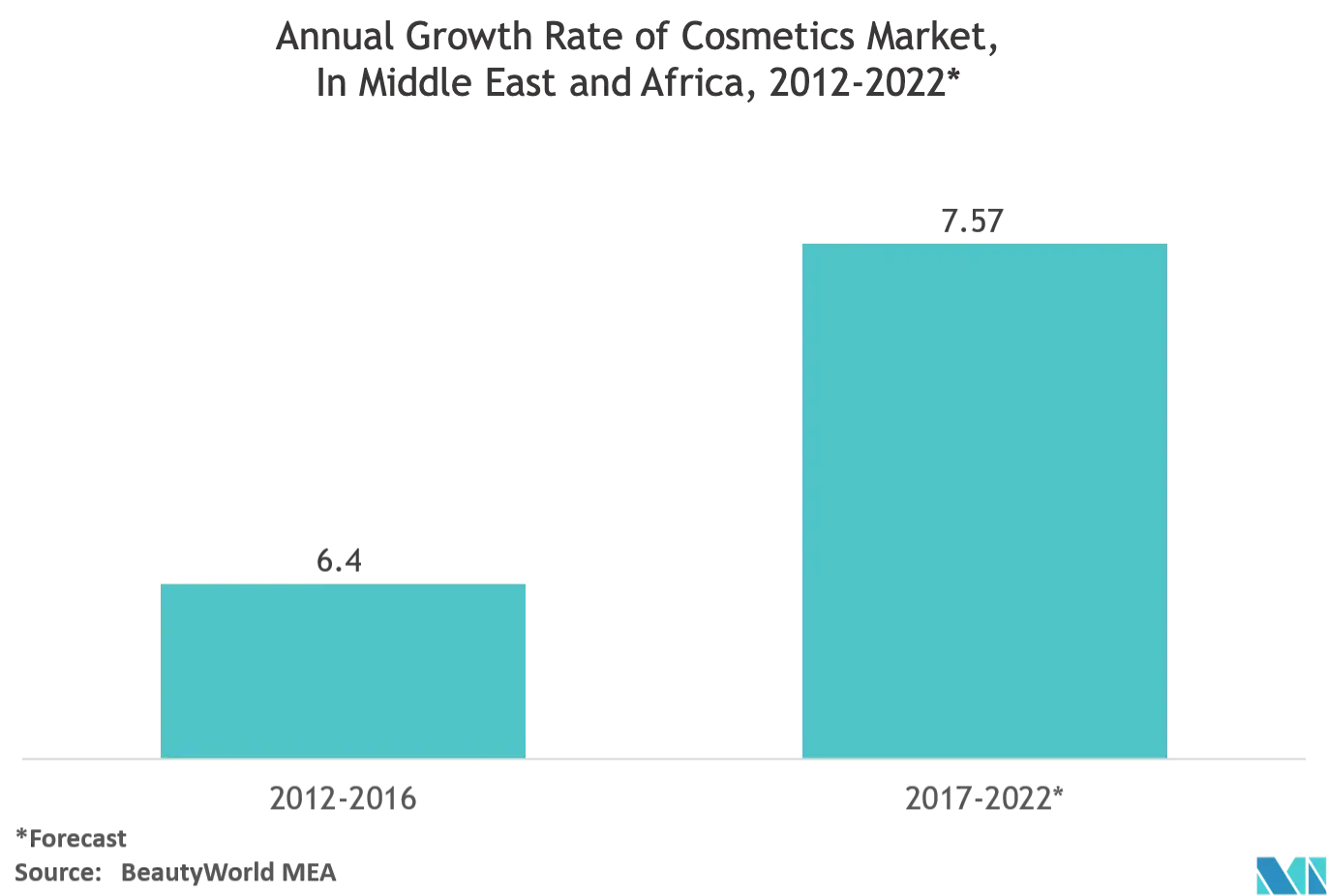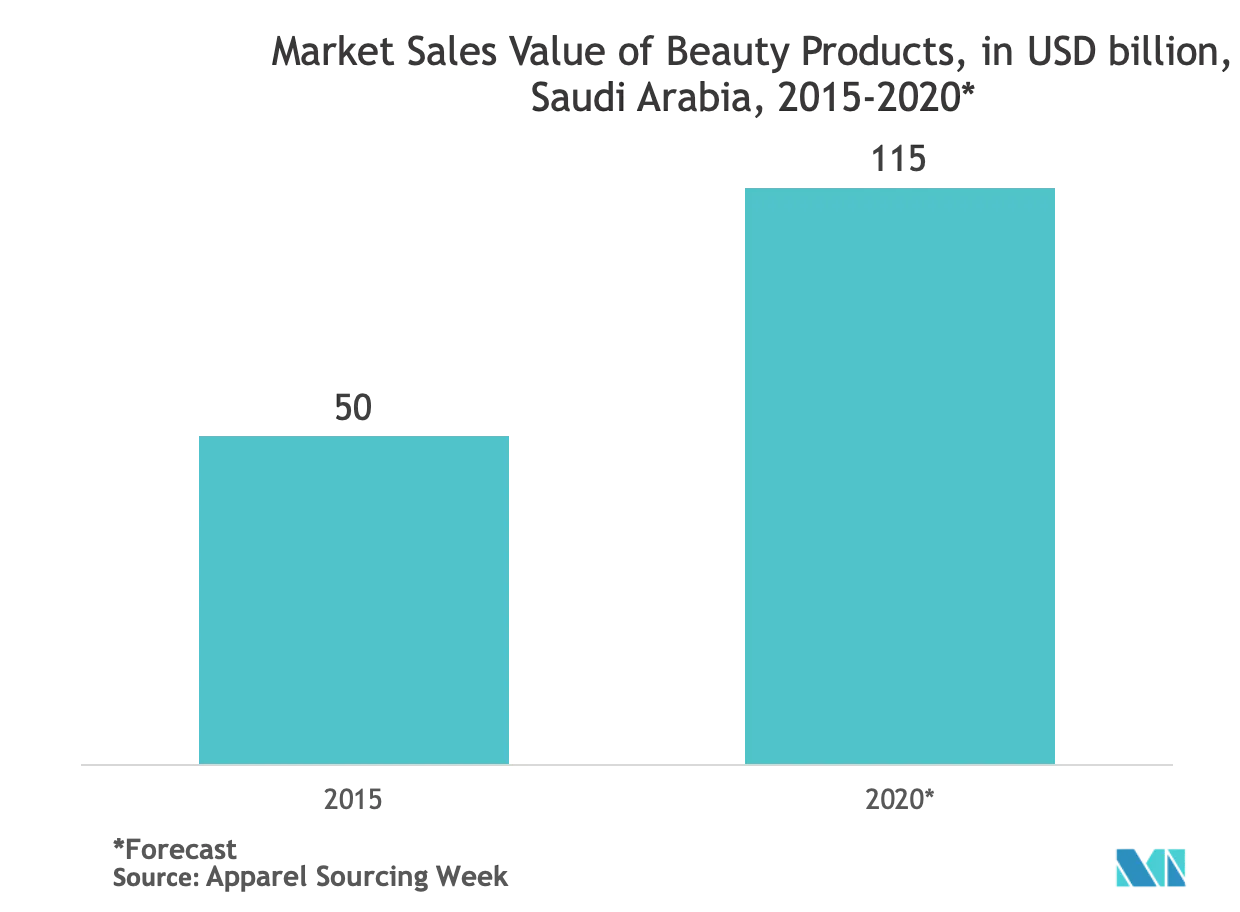Market Trends of Middle East and Africa Cosmetic Packaging Industry
This section covers the major market trends shaping the MEA Cosmetic Packaging Market according to our research experts:
Sustainable Packaging to Drive the Market Growth
- The growing packaging industry, in terms of availability of sustainable packaging solutions in the region, is expected to, in turn, boost the cosmetic packaging market. For instance, In July 2019, Agthia Group inaugurated a new packaging technology center to develop sustainable packaging technologies in Al Ain, United Arab Emirates (UAE). Such initiatives help companies minimize waste in the region with its environmental-friendly formulae and ingredients used for both the cosmetic and its packaging.
- In April 2019, Sarten Ambalaj, a packaging producer based in Turkey, received a EUR 25 million investment by EBRD, which will enable the company to become resource-efficient. It also includes a EUR 2 million loan from the Clean Technology Fund under the EBRD's Near Zero Waste program. In February 2020, Interpack Alliance collaborated with top exhibition management firms in the recently organized Pacprocess Middle East Africa (MEA), 2019 fair, in Cairo, Egypt. Such developments in the packaging industry, coupled with the growth in the cosmetic industry in these countries, are expected to boost the market growth.
- Further, driven by the government bodies' several regulations on plastic usage in regards to its commitment to sustainability. There has been a growing preference towards the glass packaging for various liquid cosmetics over plastic bottles. According to the Saudi organization (SASO), plastic products must be made of an approved oxo-biodegradable material, which might restrict the import of plastics in the country. Hence, several factors are expected to change the adoption trends of cosmetic packaging.
- Additionally, in South Africa regions, driven by the low growth rate of GDP and less disposable income. South African consumers demand high-quality products with essential features, such as reliability and affordability. Consumers in this region usually opt for local brands or international brands depending on local lifestyles, customs, affordability, and sustainability. For instance, In April 2019, Unilever South Africa introduced bottles made from 100% recycled plastic and fully recyclable packaging bottles in its Sunlight Dishwashing Liquid product line, as it seeks to reduce its environmental footprint.

Saudi Arabia to Register Significant Growth
- Saudi Arabia is the largest market for cosmetic products in the Middle East and Africa, owing to the increasing spending powers and ability of women in the region. According to the General Authority for Statistics (Saudi Arabia), the largest population group in the Kingdom of Saudi Arabia consisted of 10.6 million male nationals and about 10.2 million female Saudi nationals in 2018.
- The country has depicted one of the highest rates of consumption of cosmetics in the MEA region and is also dominating the consumption of skin and hair care products. Consumers in Saudi Arabia are inclined toward spending large sums on their personal appearance, which is expected to supplement the growth of the cosmetic industry; hence, in-turn increasing the demand for cosmetic packaging in the country.
- The increasing adoption of cosmetics due to the increase in the disposable income in the country is further expected to stimulate the value of the aesthetic value of these products. Also, the increasing penetration of social media and e-commerce websites in the country is proliferating the demand for cosmetic products, hence, stimulating the adoption of cosmetic packaging products.
- In November 2019, SIG, a carton and packaging machinery provider, planned to grow its MEA business by providing the companies with pack size varieties and increased customer support.


